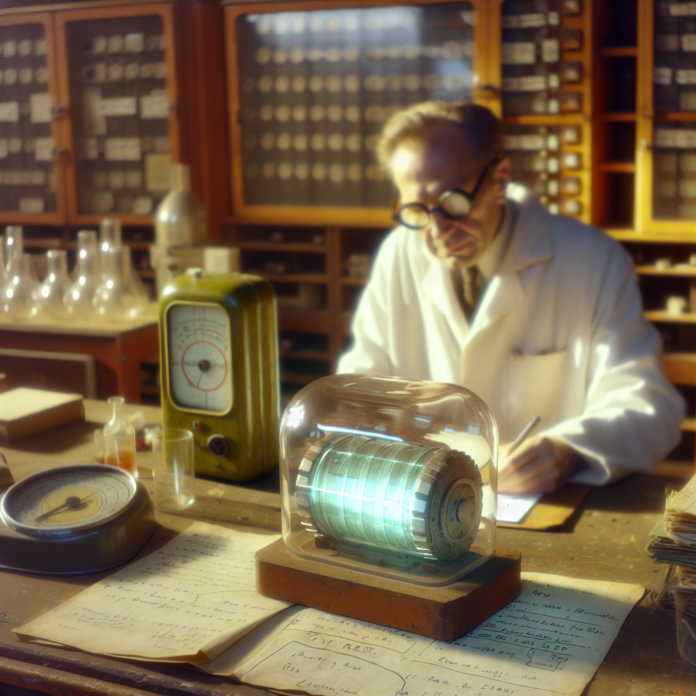Revolutionizing Energy: Scientists Develop a Battery That Never Needs Charging
Introduction: A New Era in Power Technology
In an age where digital devices and electric vehicles dominate our daily lives, one of the biggest challenges has remained consistent — battery charging. However, that may soon be a worry of the past. Scientists have recently developed a groundbreaking power source that promises to end the age-old tradition of plugging in. According to a recent article from SciTechDaily, researchers have engineered a battery that never needs recharging, marking a revolutionary moment in the world of energy storage and power generation.
What Makes This Battery Unique?
This isn’t just any incremental improvement or upgraded lithium-ion cell. Rather, it’s an entirely new concept based on nuclear diamond technology — a power source that harnesses energy from radioactive isotopes encased within synthetic diamonds. Dubbed the “nuclear battery,” this innovation is built to last for decades, making frequent charging or replacement a concept of the past.
The Technology Behind the Innovation
The battery operates using carbon-14, a mildly radioactive isotope, collected from graphite blocks used in nuclear reactors. This isotope is then placed inside a man-made diamond structure that acts as both a semiconductor and a protective barrier. As carbon-14 undergoes beta decay, it releases electrons that the diamond converts into electricity. This process continues seamlessly for years — even centuries — without the need for refueling or external power input.
Environmental Impact: A Sustainable Power Solution
Given that the battery makes use of recycled nuclear waste, its production actually helps clean up an enduring problem in the energy sector. By converting radioactive material into a safe, long-lasting power source, these batteries reduce environmental hazards and promote sustainable practices. Moreover, their production emits far less carbon compared to traditional battery manufacturing processes.
Zero Waste, Maximum Efficiency
This innovation doesn’t just provide convenience — it introduces a zero-waste model for energy storage systems. Traditional batteries, particularly lithium-ion variants used in smartphones and electric vehicles, have life spans of a few years and are notoriously difficult to recycle. These nuclear diamond batteries could last for thousands of years without performance degradation, significantly reducing electronic waste and the demand for raw materials.
Potential Applications Across Industries
Although the battery is currently in its developmental phase, its potential uses span a wide range of industries. From space missions and deep-sea exploration to medical devices and wearable tech — this battery could revolutionize how we think about power supply and energy independence.
Medical Devices and Implants
Pacemakers, hearing aids, and insulin pumps are just the beginning. Imagine medical implants that never require surgery just to replace a battery. The longevity and reliability of nuclear batteries could redefine how long-term health devices are conceived and maintained, reducing healthcare costs and improving quality of life.
Space Exploration
Spacecraft and rovers demand constant energy but are often isolated from sunlight or other external power sources. A battery that never needs recharging could vastly extend mission timelines for space agencies like NASA, enabling long-term exploration and scientific research deep into our solar system.
Powering IoT and Wearable Tech
The demand for smart wearables and interconnected devices is rising rapidly. Yet, prolonged battery life remains a challenge. Imagine fitness trackers, smartwatches, or even smartphones that don’t need to be charged for years or even decades. The integration of such cutting-edge technology into Internet of Things (IoT) devices can redefine user experience by eliminating downtime and battery anxiety.
How Safe Is a Nuclear Battery?
Safety is naturally a top concern when dealing with radioactive materials. However, scientists behind this innovation emphasize that the carbon-14 isotope emits low-energy beta particles that can be safely contained within the diamond shell. The strong carbon lattice structure of the diamond not only conducts electricity but also acts as an impenetrable force against radiation leakage, ensuring complete user safety even in wearable applications.
Regulations and Testing
While the concept is still progressing through various research and testing phases, developers are working closely with governmental regulatory bodies to ensure that the end product meets all safety and environmental standards. Future iterations may receive special casing or insulating layers to further enhance user safety.
Challenges and Limitations
As revolutionary as this battery may be, there are still hurdles on the path to commercialization. One of the primary challenges is the high cost of producing synthetic diamonds and refining radioactive carbon. Scaling up production to meet global demand while maintaining affordability could be a substantial hurdle in the short term.
Public Perception
Another notable challenge is public perception. The word “nuclear” often raises alarm due to associations with nuclear disasters and radiation exposure. Public education and transparent research will be essential to gain widespread acceptance of this technology.
The Future of Energy: What’s Next?
This high-tech power source could single-handedly reshape the future of how we use and think about electricity. While we may not see smartphones powered by nuclear batteries next year, the gradual adoption in niche markets like space exploration and healthcare paves the way for broader implementation down the road.
The next steps involve refining the technology, improving affordability, and ensuring widespread safety protocols. Tech companies and governments alike are already showing interest, hinting at a future where never charging a battery could become the new norm.
Conclusion: A Glimpse Into a Wireless, Worry-Free World
The development of a battery that never needs charging isn’t just a technological breakthrough — it’s a paradigm shift. From revolutionizing medical implants to enabling endless space missions, this battery could redefine human interaction with technology as we know it. While challenges remain, the potential benefits far outweigh the risks, making it one of the most exciting developments in modern science and sustainable energy.
Stay tuned as this promising innovation continues to evolve. The rechargeable future might just be non-rechargeable — in the best way possible.


